The field trip on the afternoon of Sunday 16 July was at Tidgrove Warren, south of Kingsclere, by kind invitation of Raleigh Place. It was a site which the Society had visited 5 years previously, in 2018. The estate is managed sympathetically for wildlife. It first entered the scheme for ‘Set-aside’ in1990, before signing up for Higher Level Stewardship in 1994. Harold Makant, the scheme adviser from Natural England, joined us to explain aspects of the land management in what is an early example of rewilding. The group of 30 members and guests gathered at the fishing hut by the lake, before Raleigh led them off in cars to explore the estate. First stop was towards the top of the ridge on the eastern side of the valley. Several telescopes were trained on the top of a bare patch of land on the opposite side of the valley, where an adult and two well-grown juvenile Stone Curlews could be seen. Swifts flew overhead and flowers seen included Small Scabious and Sainfoin. After driving further along the ridge, the group stopped again to examine an area of scrub which has self-seeded predominantly with Hawthorn, but also with species such as Blackthorn. This area is grazed lightly by cattle and the ground below the scrub is slowly reverting from arable farm land to chalk grassland. Pyramidal Orchids were abundant and other flowers included Agrimony, Wild Basil, Blue Fleabane, Hairy St John’s-wort, Dwarf Thistle, Yellow Rattle, Burnet Saxifrage, Goat’s-beard, Bladder Campion, Musk Mallow and Upright Hedge Parsley. The edge of the scrub is bounded by a bridleway, with a small patch of woodland beyond. It is hoped that seeds from the woodland will enable larger trees such as oak to spread into the scrub to establish a Platinum Wood (a new wood to celebrate the Platinum Jubilee of the late queen). Since oak seedlings are palatable to cattle, they may need to be protected initially. The boundary along the Wayfarer’s Walk has been allowed to grow out into the field by a metre each year for the last 20 years.
The next stop overlooked the site of a hunting lodge which was used by Henry II. The telescopes came out again to look at a few more Stone Curlews on the far side of the valley. The group attracted the attention of a small herd of Belted Galloway cattle, which cautiously approached. Moving on to the next block of scrub, butterflies seen included Marbled Whites and Gatekeepers. Three Hares were seen across the valley in another field. Raleigh estimated that there may be up to about 100 Hares in total across the estate. Next stop was the butterfly scrape which had been made about five years ago. Society member Andy Bolton who helps with management of this area and regularly surveys the butterflies and moths explained that the surface had been scraped back to bare chalk, sheltered banks had been constructed and the site had been sown with the seeds of various butterfly caterpillar food plants, such as Kidney Vetch for Small Blues and Horseshoe Vetch for Chalkhill Blues. Stripey yellow and black caterpillars of the Cinnabar moth were feeding on Ragwort and a Yellowhammer was seen nearby. The next stop on the tour was a wide strip of triticale, a hybrid between rye and wheat, which is used as winter bird food. The fungus Ergot was found growing on one of the heads of grain and a small toadlet was spotted down amongst the crop. The route led back to the start. A Lapwing flew over the Stone Curlew plot towards the top of the hill, while nearby was a wide strip of mixed winter bird-feeding plants. A number of arable weeds were found beneath the crop, including Round-leaved Fluellen, Sainfoin, Fat Hen, Field Pansy, Field Madder, Common Field Speedwell and Small Toadflax. Star finds of the afternoon were a number of plants of the critically endangered Red Hemp-nettle. Raleigh then very kindly invited the group back to the fishing hut for refreshments.
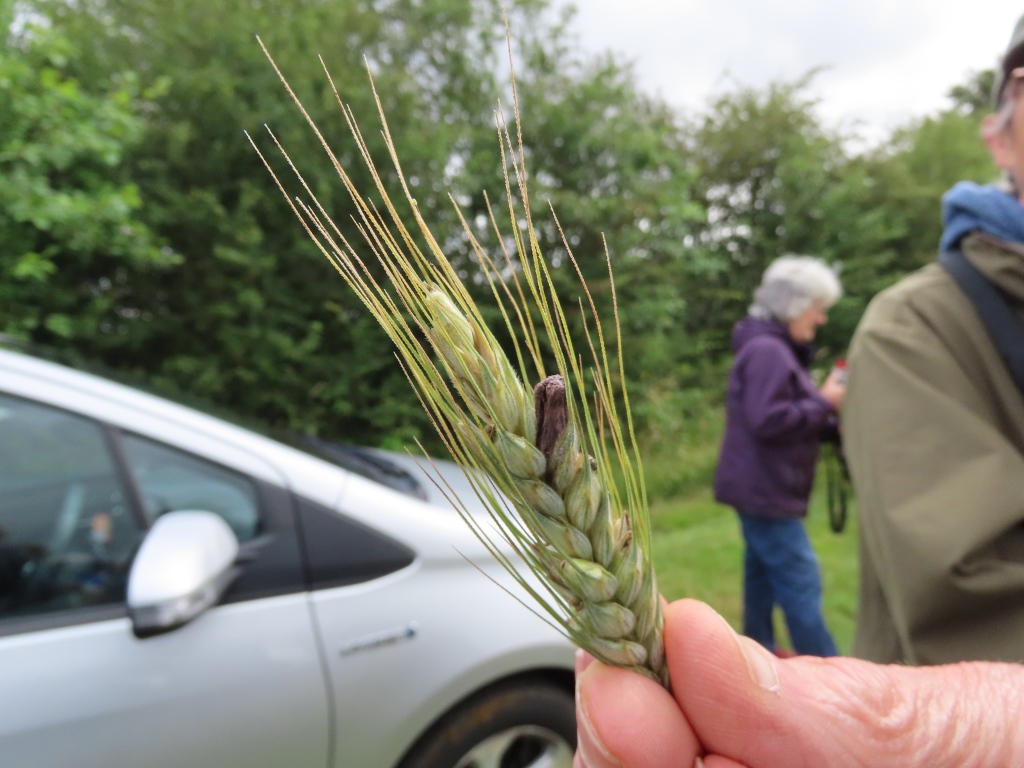
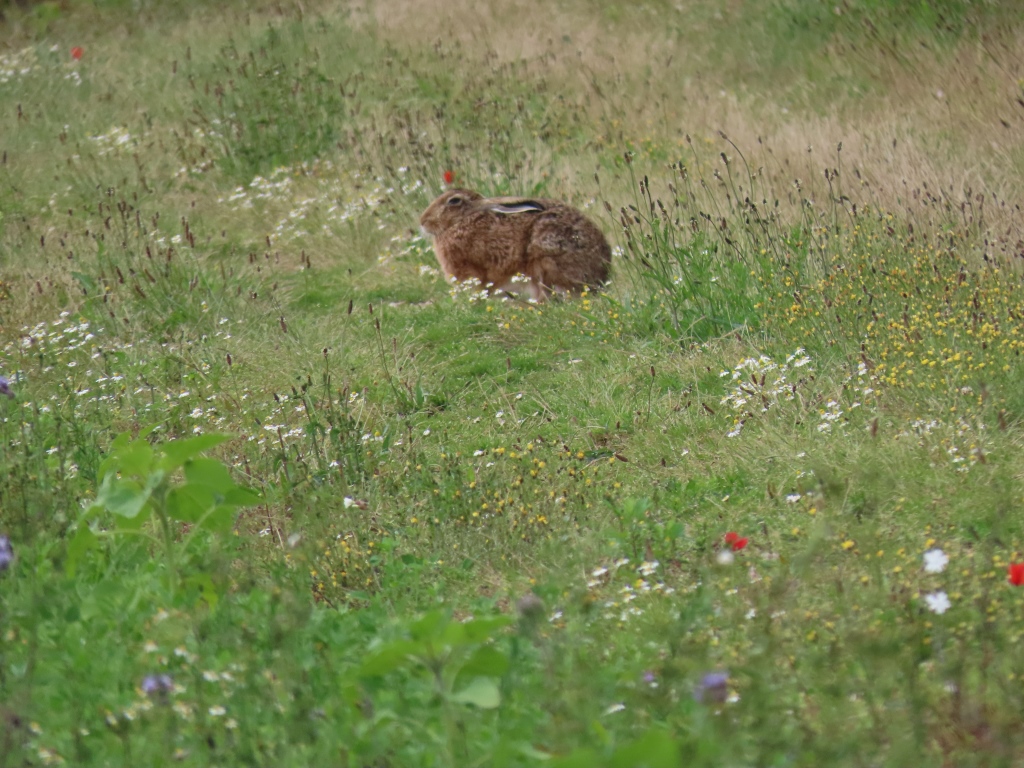
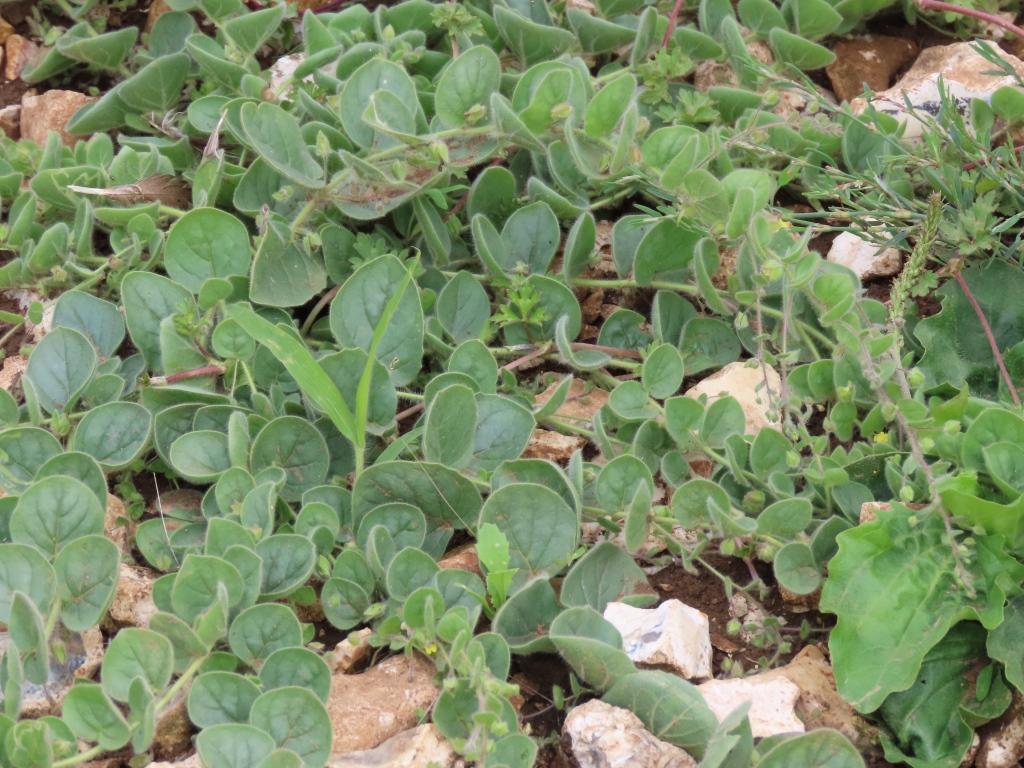
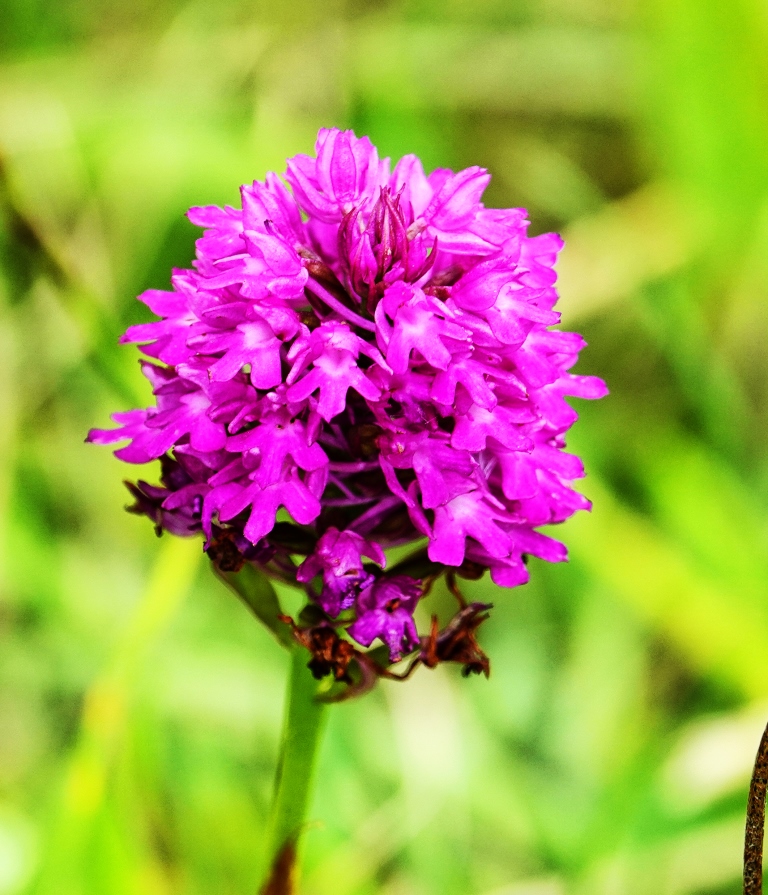
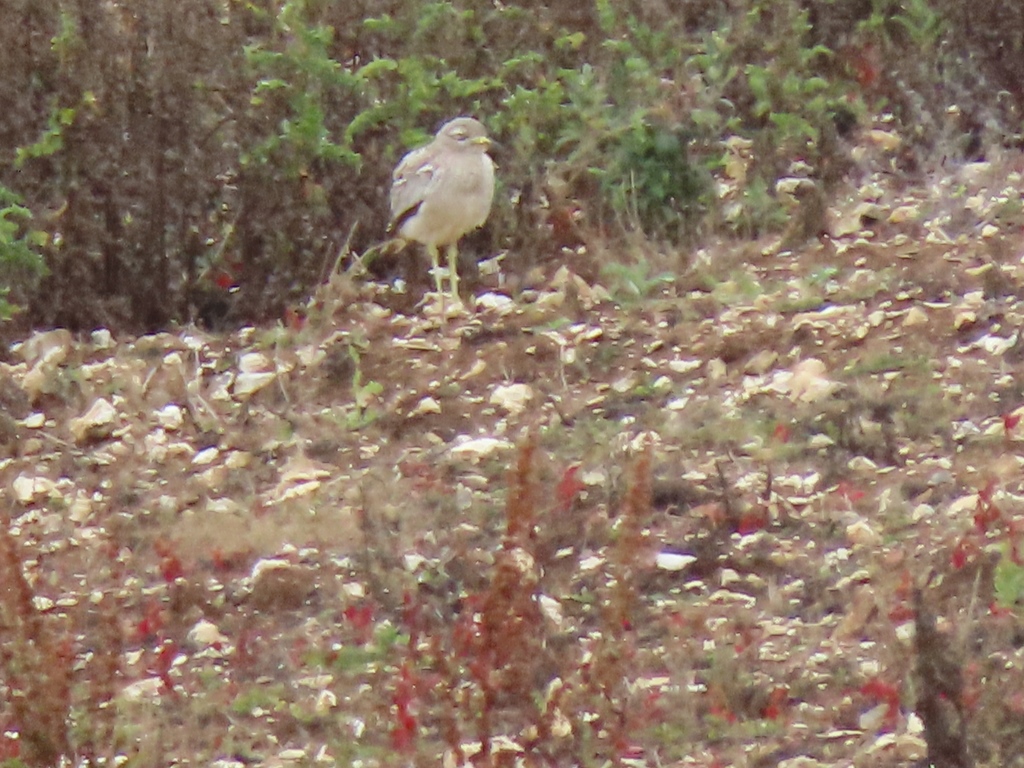
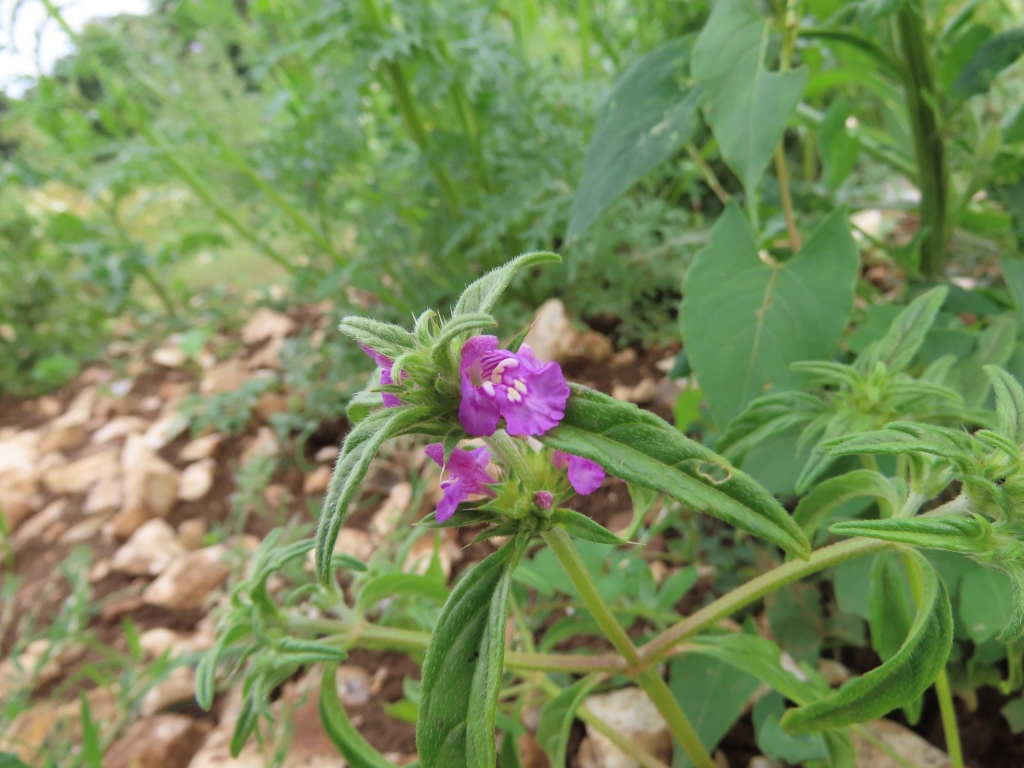
Pictures by Fiona Brown and Martin Parsons
